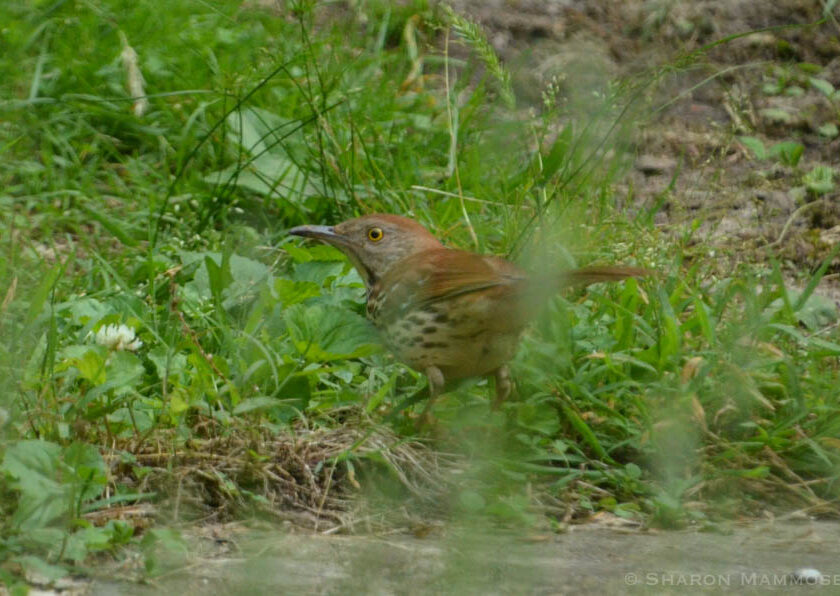Did you recognize the bird from last week’s puzzler as a Brown Thrasher (Toxostoma rufum)? This handsome bird, 12 inches long, is in the same family as mockingbirds and catbirds, able to mimic many, many songs and sounds. The male sings double phrases of each song, then moves on to the next one, continuing his repertoire for several minutes. Mockingbirds on the other hand repeat each phrase 3 or more times.
Brown Thrasher males and females help incubate the eggs and feed the babies. Sexes look the same. Brown thrashers are ground foragers, often seen hopping along the ground, then digging through the leaf litter with their long bills, looking for ants, caterpillars, crickets, grasshoppers, spiders and other small invertebrates. In other seasons when they are not nesting, they eat berries and nuts such as acorns. This bird is a common victim of the parasitic brown cowbird, which lays eggs in other bird’s nests.

Ready for another puzzler? In sticking with the bird theme, let’s do another common bird, this one a bit smaller than the Brown Thrasher.



The bird you show are both the white and tan morphs of the White-throated Sparrow, one of my favourite birds I used to see feeding in the leaf litter below red osier dogwood in my backyard when they passed through in spring and fall or on their breeding range where I used to photograph by canoe in spring and summer. The song was more subdued in the autumn but still so sweet.
I find it intriguing that if one bird of the breeding pair is a white morph, the other is a tan morph.
Murray! It’s always great to hear from you. Thanks for following along, and of course, yes, you are correct, it is a white-throated sparrow. Thanks for taking time to comment!